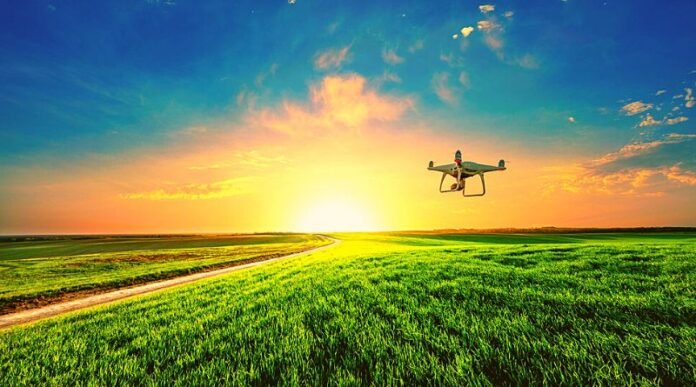Agriculture is one of the oldest industries in the world, but it’s also one of the most innovative. Farmers have been working hard to keep up with consumers’ increasing demand for fresh, locally grown produce and meat products. This trend has led to many innovations in agriculture, including ways we can use technology to make farming more sustainable.
Automated irrigation systems
Automated irrigation systems can reduce water consumption, improve water quality and reduce labor costs. Automated irrigation systems are also beneficial because they help farmers save time spent on watering and fertilizing their crops.
Automated irrigation systems allow for precise control over when and how much water is applied to each crop field by computer-controlled sprinklers or drip tape systems. This means that if there is too much rain in one area of your farm during a growing season, or if there’s not enough rain at all – no matter what happens with Mother Nature – the automated system will automatically adjust its settings so that each plant gets exactly what it needs from moment to moment throughout its growing cycle (and beyond).
Digital soil testing
Soil health is a key component of sustainable agriculture. Soil health refers to the many factors that influence how well the soil can support plant growth and provide other ecosystem services like filtering water, storing carbon and providing habitat for wildlife.
Soil testing measures how much organic matter (i.e., dead plant material) is in your soil, as well as its pH level–a measure of how acidic or alkaline it is–and nutrient content (such as nitrogen). This information can help you determine whether or not your crops are getting enough nutrients from fertilizers or other inputs such as manure; if they aren’t, then you may need to add more fertilizer or make other changes that will increase their ability to absorb nutrients from what already exists in the ground beneath them.
Drones for crop protection
Drones are a valuable tool for monitoring and protecting crops. They can be used to identify pests and diseases, areas that need more water or fertilizer, or simply to make sure your crops are growing as expected.
Drones can also be deployed in other ways: they can help farmers better understand how the soil is holding up over time; they can provide information about crop rotation practices; they even allow farmers to assess when their crops will be ready for harvest–allowing them to plan ahead and avoid overproduction at peak times.
Precision agriculture tools
Precision agriculture tools are used to gather data, which is then used to make better decisions. The resulting data can be used to improve the quality of products and drive down costs, thus increasing profitability for farmers.
The following are examples of precision agriculture tools:
- GPS-enabled tractors and farm equipment (GPS)
- Remote sensing technology that measures soil moisture content or crop growth stages by detecting infrared radiation emitted by plants (infrared thermometers)
Precision planting tools
Precision planting tools are used to plant seeds, seedlings and plant tissue. These include seeders, planters and other planting equipment. Precision agriculture technology is making this equipment more accurate and efficient.
Precision farming involves using technology such as GPS sensors to monitor soil conditions in real time so farmers can adjust their practices accordingly. For example: if there’s too much moisture in one area of the field, the farmer can apply less water there; if there isn’t enough nitrogen in another part of the field (and this would affect yield), they can add fertilizer before it gets too late in the season for fertilization effects to be noticeable
Robot farmers and other digital solutions for the future of farming.
Robot farmers are a real thing. They’re not as common as you might think, but they are improving rapidly and could soon be used to perform tasks such as harvesting, planting and weeding. This would help reduce the cost of farming and also reduce the need for human labour (which is good news if you’re looking to cut costs).
The benefits don’t end there though; these robots will also be able to work round-the-clock in all weather conditions so crops won’t have time to go bad before they reach their destination!
Technology can help us solve some of the biggest challenges facing the agricultural industry.
Technology can help us solve some of the biggest challenges facing the agricultural industry. In fact, it’s a key component of sustainable development in agriculture. Here are just a few examples:
- Using remote sensing technology and satellite imagery to analyze changes in land use practices over time helps farmers understand what works best on their land and how they can improve their yields while reducing environmental impact.
- Automated drones are used to monitor crops remotely so farmers don’t have to spend as much time walking through fields during growing season–this helps conserve energy while also cutting down on labor costs (which may be one reason why drone use has increased by 300% since 2012). Drones also allow growers to keep tabs on pest infestations or disease outbreaks before they become too severe; this allows them enough time for preventative measures such as spraying pesticides or implementing other management strategies based off previous experiences with similar situations elsewhere around town!
Conclusion
Agriculture is one of the most important industries in the world, and it’s not going away anytime soon. We need to find ways to make it more sustainable and efficient so that we can feed our growing population without destroying our planet. Technology is one potential solution, but only if we use it responsibly.














Greetings of the Day.
Hello, Kaleem Ullah.
Great Content. I Strongly recommended it.